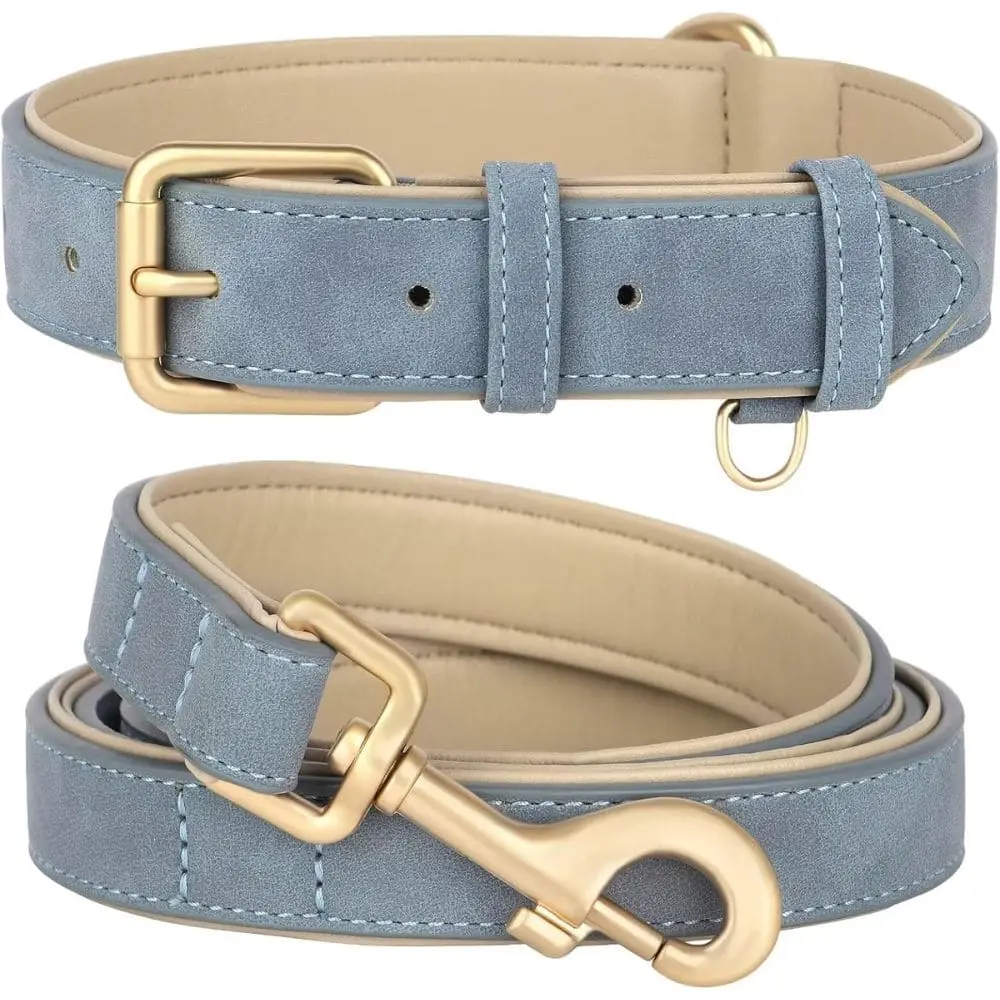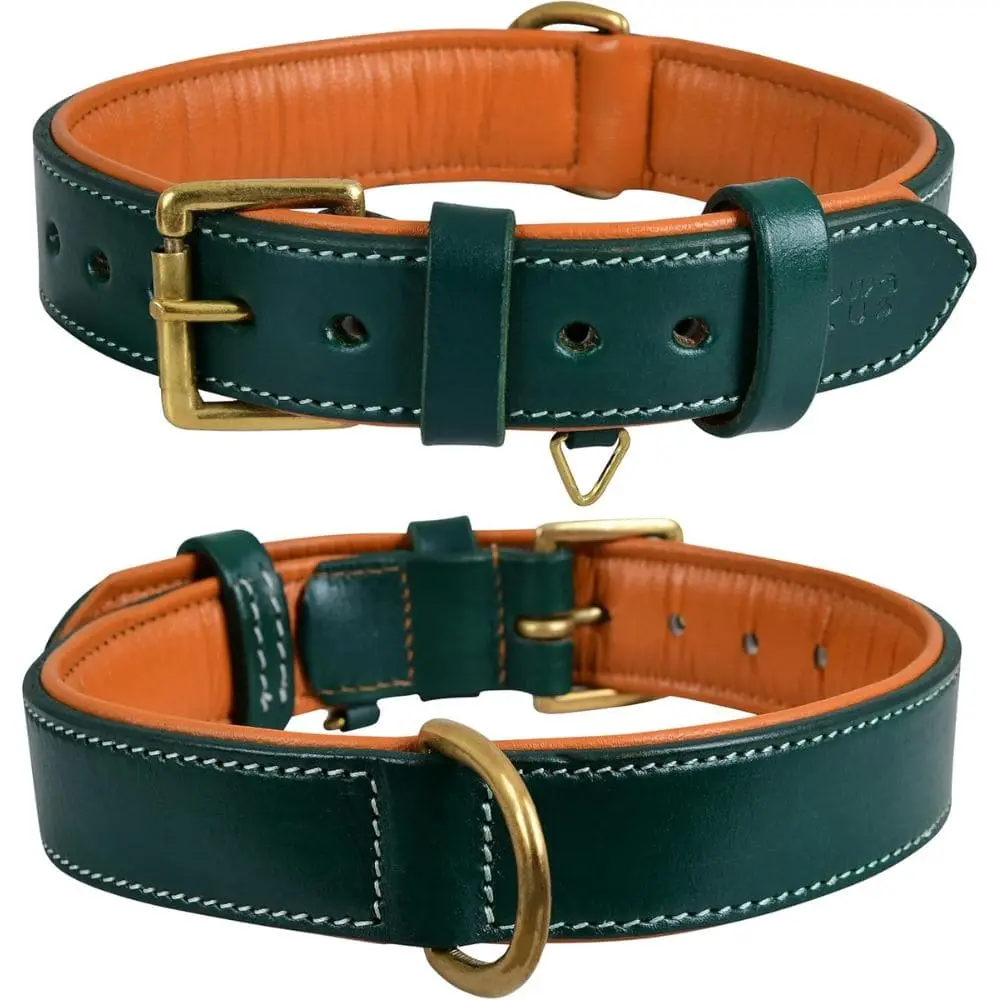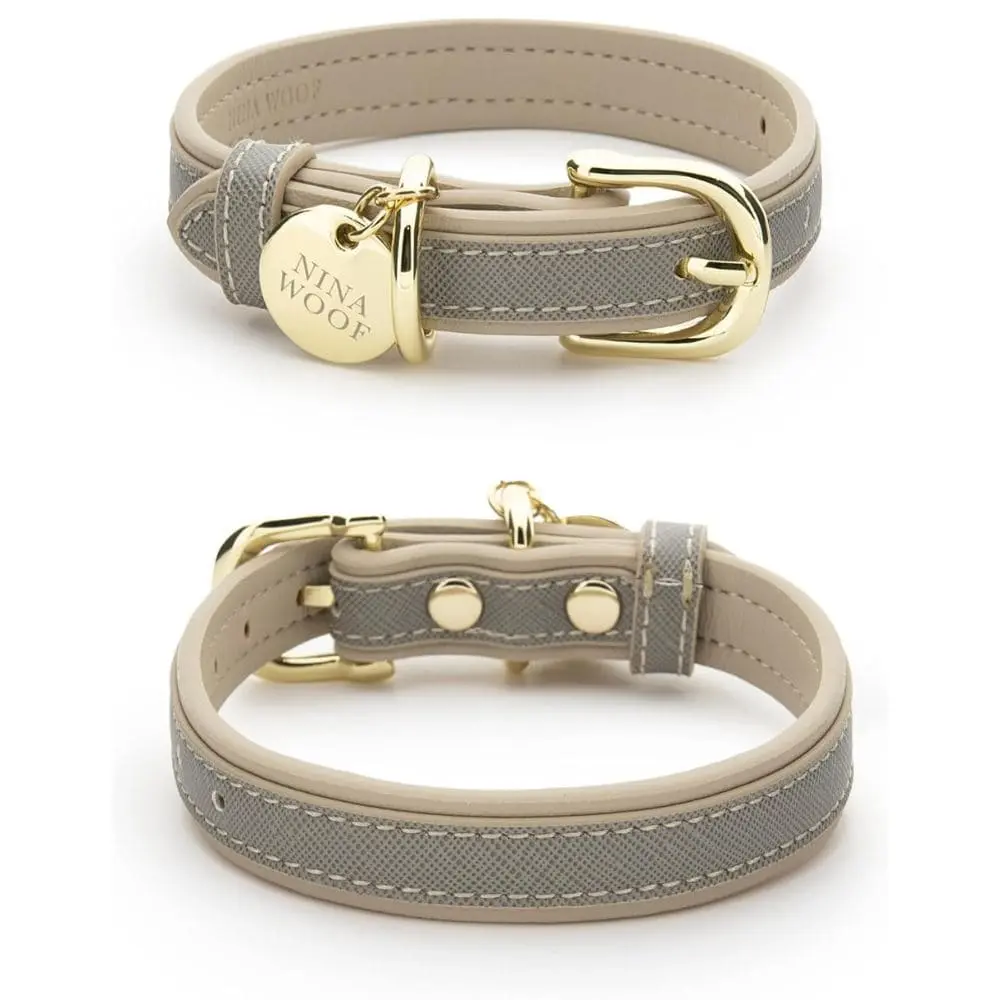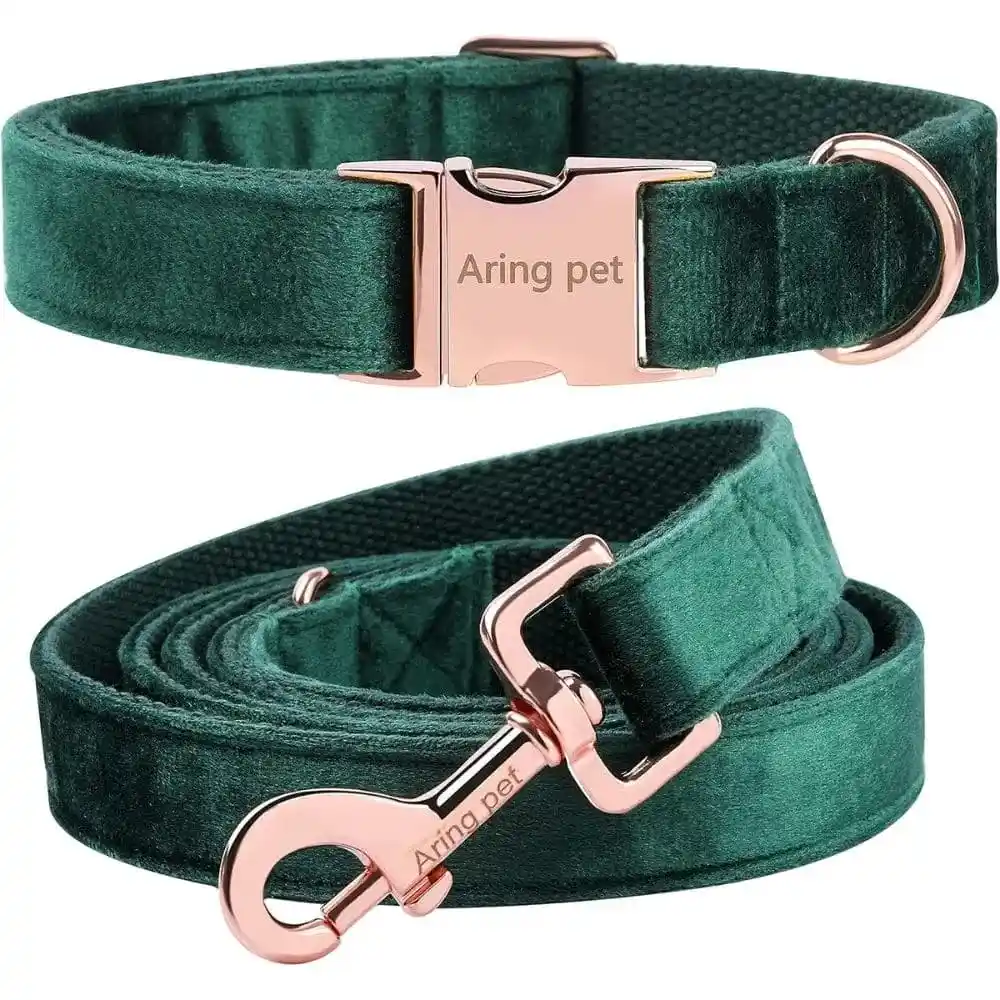Great Dog Collars: The Complete Guide for the Perfect Collar for Your Dog
Choosing a collar for your dog shouldn’t be complicated, yet many pet owners struggle to find one that’s comfortable, durable, and actually works for their dog’s specific needs. After years of testing collars with dogs of all sizes and consulting with veterinarians and professional trainers, I’ve learned that the “best” collar depends entirely on your dog’s personality, size, and daily activities.
In this comprehensive guide, you’ll discover everything you need to know about selecting great dog collars that keep your pet safe, comfortable, and stylish. Whether you’re shopping for a tiny Chihuahua or a powerful German Shepherd, this article will help you make an informed decision.

What Makes a Great Dog Collar?
A truly great dog collar combines several essential qualities that work together to keep your dog safe and comfortable. The best dog collars share these fundamental characteristics:
Durability is non-negotiable. Your dog’s collar needs to withstand daily wear, outdoor adventures, and the occasional tug during walks. Durable dog collars are made from high-quality materials like reinforced nylon, genuine leather, or biothane that won’t fray, crack, or break under pressure.
Comfort matters just as much as strength. Comfortable dog collars feature smooth edges, appropriate width for your dog’s size, and breathable materials that won’t irritate sensitive skin. Your dog wears this collar for hours every day, so comfort directly impacts their wellbeing.
Proper fit is crucial for safety. Adjustable collars allow you to customize the fit as your dog grows or their coat thickness changes with the seasons. You should be able to fit two fingers comfortably between the collar and your dog’s neck—tight enough that they can’t slip out, but loose enough to breathe and move freely.
Visibility and safety features can be lifesavers. Reflective dog collars and LED dog collars help drivers and cyclists spot your dog during early morning or evening walks, significantly reducing accident risks.
Types of Dog Collars: Finding Your Perfect Match
Understanding the different collar types available helps you match the right product to your dog’s specific needs.
Flat Collars: The Everyday Essential
Flat collars are the most common type and work well for most dogs. These versatile collars come in various materials:
Nylon dog collars offer excellent value and durability. They’re lightweight, water-resistant, and available in countless colors and patterns. Modern nylon collars resist fading and maintain their strength even after months of daily use. They’re particularly suitable for active dogs who love water activities.
Leather dog collars provide a classic, sophisticated look with exceptional longevity when properly maintained. Premium dog collars made from full-grain leather develop a beautiful patina over time and can last for years. They’re ideal for dogs with sensitive skin because leather is naturally hypoallergenic and becomes softer with wear.
Specialty Collars for Specific Needs
Waterproof collars are essential for dogs who swim, play in the rain, or live in humid climates. These collars don’t absorb moisture, preventing odors and maintaining their integrity. Biothane and coated nylon are popular waterproof materials that combine durability with easy maintenance.
Reflective dog collars incorporate reflective stitching or strips that illuminate when light hits them. If you walk your dog during dawn, dusk, or night, this safety feature is invaluable. Many top-rated dog collars now include reflective elements as a standard feature.
LED dog collars take visibility to the next level with built-in lights that glow or flash. These battery-powered collars ensure your dog is visible from hundreds of feet away, providing peace of mind during dark walks.
Personalized and Custom Options
Personalized dog collars allow you to embroider or engrave your dog’s name and your phone number directly onto the collar. This eliminates the need for dangling ID tags that can catch on objects or make noise. Custom dog collars can also reflect your dog’s personality with unique colors, patterns, or designs.

Safety Features That Matter
When evaluating great dog collars, safety considerations should guide your decision.
Gentle and Non-Restrictive Design
Non-choke collars are designed to distribute pressure evenly around your dog’s neck rather than concentrating it on the trachea. Martingale collars are excellent examples—they tighten slightly when your dog pulls but have a limited closure that prevents choking. These collars are gentle on the neck while providing control.
Escape-proof collars feature secure buckles and limited-slip designs that prevent your dog from backing out of their collar. This is particularly important for dogs with narrow heads like Greyhounds or anxious dogs who might panic and try to escape.
Material Safety and Comfort
Long-lasting collars made from quality materials won’t deteriorate and become sharp or rough against your dog’s skin. Check that hardware is rust-resistant and smooth, with no sharp edges. Easy-to-clean collars help maintain hygiene, especially important for dogs with skin sensitivities or allergies.
Choosing the Right Collar for Your Dog’s Size
Size matters significantly when selecting dog collars. Here’s how to choose correctly:
Small dogs and puppies need lightweight collars that won’t weigh down their delicate necks. Look for narrow widths (1/2 to 3/4 inch) and soft materials. Adjustable collars are essential for puppies since they grow quickly.
Medium dogs typically wear collars between 3/4 and 1 inch wide. They have more options available and can comfortably wear most collar styles.
Large and giant breeds require wider collars (1 to 2 inches) to distribute pressure across a larger surface area. Heavy-duty collars with reinforced stitching and industrial-strength hardware are necessary for powerful dogs who pull.
Where to Buy Dog Collars: Shopping Smart
Knowing where to buy dog collars helps you find quality products at fair prices.
Pet specialty stores offer the advantage of trying collars on your dog before purchasing. Staff can provide personalized recommendations based on your dog’s breed and behavior.
Online retailers provide an extensive selection and competitive pricing. Read dog collar reviews carefully, checking for verified purchases and detailed feedback about durability and fit. Look for retailers with hassle-free return policies.
Custom collar makers on platforms like Etsy create unique, handmade collars with premium materials and personalization options. While typically more expensive, these collars are often heirloom-quality pieces.

Budget Considerations: Affordable vs. Premium
Affordable dog collars don’t have to mean low quality. Many budget-friendly options between $10-$25 offer excellent durability and comfort. Focus on reputable brands that use quality materials even in their budget lines.
Premium dog collars ranging from $30-$100+ offer advanced features like hand-stitched leather, custom engraving, or specialized safety mechanisms. These collars often last significantly longer, making them cost-effective investments over time.
Maintenance Tips for Long-Lasting Collars
Proper care extends your collar’s lifespan:
- Clean regularly: Nylon collars can be machine-washed or hand scrubbed with mild soap. Leather requires specialized leather cleaner and conditioner every few months.
- Inspect frequently: Check for fraying, worn hardware, or weakened materials. Replace collars showing signs of wear to prevent failure at critical moments.
- Rotate collars: Having two collars allows you to wash one while your dog wears the other, reducing wear and maintaining hygiene.
- Store properly: When not in use, hang collars to maintain their shape and prevent creasing.
Common Mistakes to Avoid
Choosing collars based solely on appearance can lead to problems. While aesthetics matter, functionality and safety must come first.
Keeping outgrown collars on puppies is dangerous. Check fit weekly during your dog’s growth phases and adjust or replace as needed.
Ignoring your dog’s activity level when selecting materials leads to premature wear. Active dogs need more durable options than sedentary companions.
Forgetting to update ID information on personalized collars after moving or changing phone numbers defeats their safety purpose.
Expert Recommendations by Dog Type
For active, outdoor dogs: Choose waterproof collars with reflective elements and quick-release buckles for easy removal after muddy adventures.
For escape artists: Martingale or limited-slip collars provide security without choking risks.
For senior dogs: Soft, padded collars offer extra comfort for dogs with arthritis or sensitive skin.
For puppies: Adjustable, lightweight collars that grow with your dog and feature breakaway safety mechanisms.
The Bottom Line on Great Dog Collars
Finding great dog collars means balancing durability, comfort, safety, and value. The best collar for your dog depends on their unique needs, but prioritizing quality materials, proper fit, and appropriate safety features ensures your investment serves your dog well for years.
Remember that collars are your dog’s connection to you when they’re out in the world. Taking time to choose thoughtfully demonstrates your commitment to their safety and comfort. Whether you select affordable dog collars that meet basic needs perfectly or invest in premium options with advanced features, making an informed choice means you’re doing right by your four-legged companion.

Frequently Asked Questions
What size collar should I buy for my dog?
Measure your dog’s neck with a soft tape measure, then add 2 inches to that measurement. You should be able to fit two fingers comfortably between the collar and your dog’s neck. Most collars include size ranges on packaging, so choose one that includes your dog’s measurement in the middle of that range for optimal adjustability.
How often should I replace my dog’s collar?
Replace your dog’s collar every 1-2 years, or sooner if you notice fraying, worn hardware, fading, or any structural damage. Active dogs who swim frequently or play rough may need replacements more often. Always inspect your dog’s collar monthly for signs of wear.
Are leather or nylon collars better?
Both materials have advantages. Nylon dog collars are more affordable, water-resistant, and available in many colors. Leather dog collars are more durable long-term, naturally hypoallergenic, and develop character with age. Choose nylon for water-loving dogs and leather for dogs with sensitive skin or for a premium aesthetic.
Do I need a reflective collar for my dog?
If you ever walk your dog during low-light conditions—early morning, evening, or night—reflective dog collars are a valuable safety investment. They significantly increase your dog’s visibility to drivers and cyclists, potentially preventing accidents. LED collars provide even greater visibility.
Can my dog wear their collar all the time?
While many dogs wear collars 24/7, removing the collar during unsupervised periods and at night can prevent accidents and give your dog’s neck a break. This is particularly important for puppies, small dogs, or dogs who play with other dogs. Always ensure your dog has identification if they might escape when collarless.
What’s the difference between a collar and a harness?
Collars go around the neck and are suitable for well-trained dogs who don’t pull. Harnesses distribute pressure across the chest and shoulders, making them better for dogs who pull, have respiratory issues, or neck sensitivity. Many owners use both: a collar for ID tags and a harness for walking.
Are personalized collars worth the extra cost?
Personalized dog collars eliminate the need for dangling ID tags, reducing noise and preventing tags from falling off. If your dog frequently loses tags or if the jingling bothers you, personalized collars are worthwhile investments. They also look cleaner and more streamlined.
About the Author: This guide was created based on extensive research, consultation with veterinary professionals, and years of experience evaluating dog products across various breeds and sizes. We prioritize evidence-based recommendations that put your dog’s safety and comfort first.
